Reproduced artwork detailing small and large intestines with Tibetan and Latin labels

Reproduced artwork detailing small and large intestines with Tibetan and Latin labels Reproduced artwork detailing small and large intestines with Tibetan and Latin labels. Contemporary knitwork. © Katharina Sabernig – Tibetan classical medical vocabulary is already rich in anatomical terms. When encountering biomedical concepts, new terms were coined in the Tibetan language. Nevertheless, many historical […]
Knitted artwork of guts based on Tibetan medical painting at Atsagat Monastery, Republic of Buryatia, Russia.
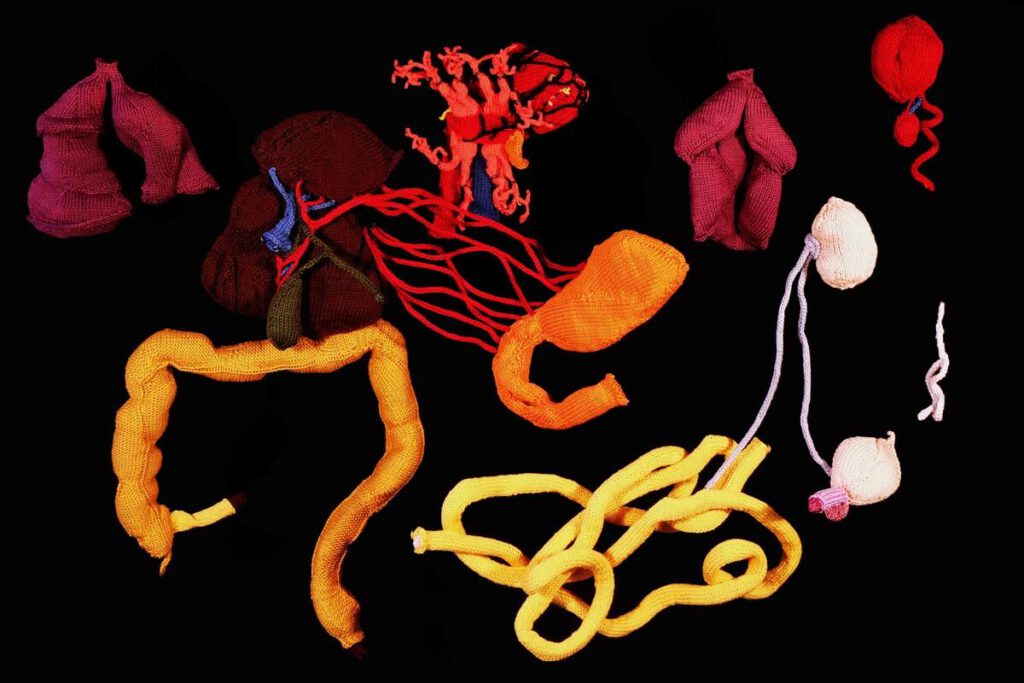
Knitted artwork of guts based on Tibetan medical painting at Atsagat Monastery, Republic of Buryatia, Russia Knitted artwork of guts based on Tibetan medical painting at Atsagat Monastery, Republic of Buryatia, Russia. © Katharina Sabernig – In Buryatia, an ethnically Mongolian region belonging to Russia, Tibetan medical knowledge encountered biomedical knowledge in the early twentieth […]
Moxibustion points according to Medical Arts of the Lunar King, Sowa Rigpa intersections with Chinese and Indian medical canons
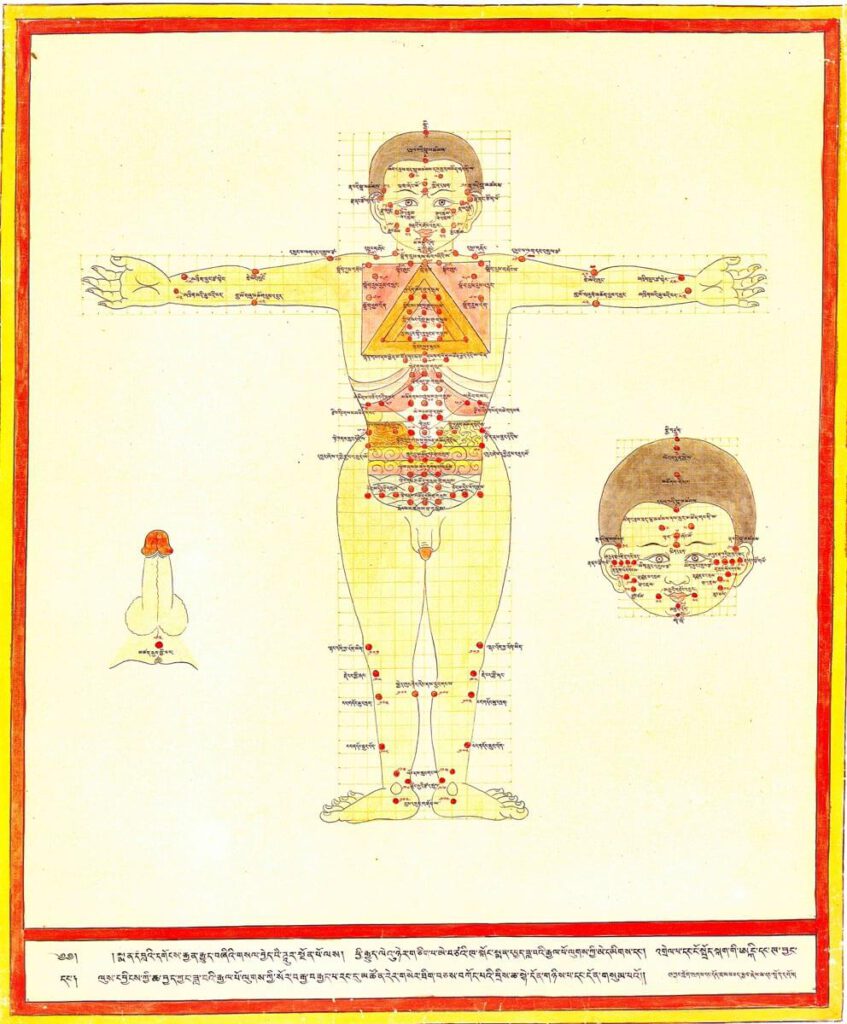
Moxibustion points according to Medical Arts of the Lunar King, Sowa Rigpa intersections with Chinese and Indian medical canons 20th century reproduction of 17th century CE painting. Held in Ulan-Ude, Republic of Buryatia, Russia. – Moxibustion is a treatment particularly indicated for metabolic conditions (ma zhu ba) and weak digestive fire (me drod nyams pa) […]
Treatment points for moxibustion, venesection, and surgery
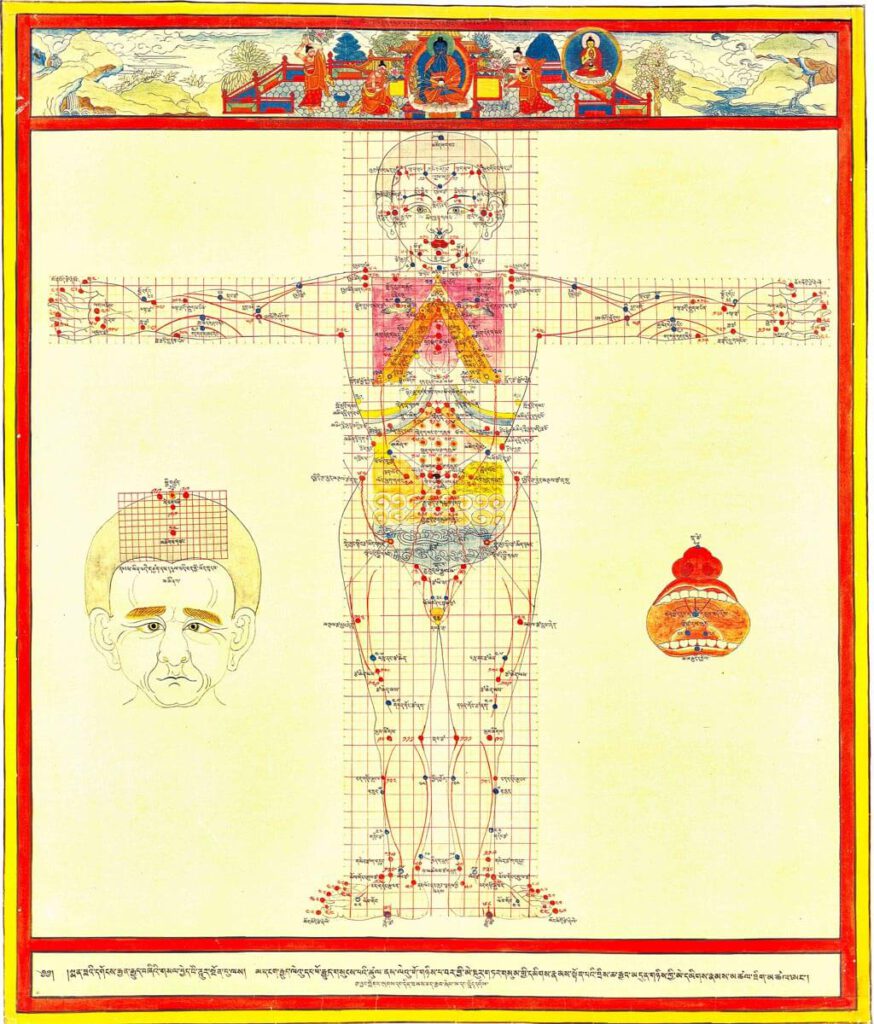
Treatment points for moxibustion, venesection, and surgery 20th century reproduction of 17th century CE painting. Held in Ulan-Ude, Republic of Buryatia, Russia. – This painting depicts the anterior view for the three types of external therapy treatment points: moxibustion, venesection, and surgical puncture. Moxibustion points are vermillion numbers and lines, venesection points are blue lines […]
Guts depicted as vulnerable part of the body

Guts depicted as vulnerable part of the body 20th century reproduction of 17th century CE painting. Held in Ulan-Ude, Republic of Buryatia, Russia. – Tibetan medicine recognizes specific vulnerable body parts to which trauma is described to be terminal or at least treated with difficulty. All critical internal organs are defined as vulnerable, the left […]
Minor connecting blood vasculature of the body including gut
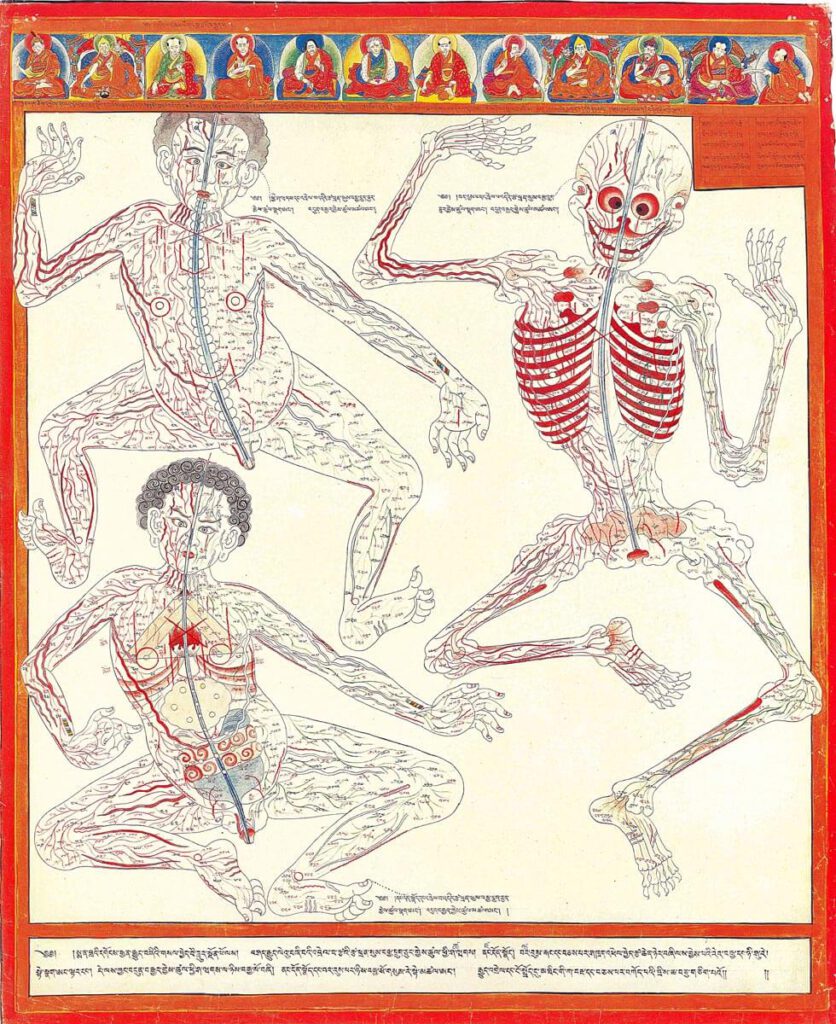
Minor connecting blood vasculature of body including gut 20th century reproduction of 17th century CE painting. Held in Ulan-Ude, Republic of Buryatia, Russia – The Four Tantras details specific enumerations of minor channels illustrated here in anatomical layout with important physiological functions. There are 360 interconnecting channels as they relate to skin and muscle tissue, […]
Major connecting blood vasculature of the body including gut with related vulnerable points
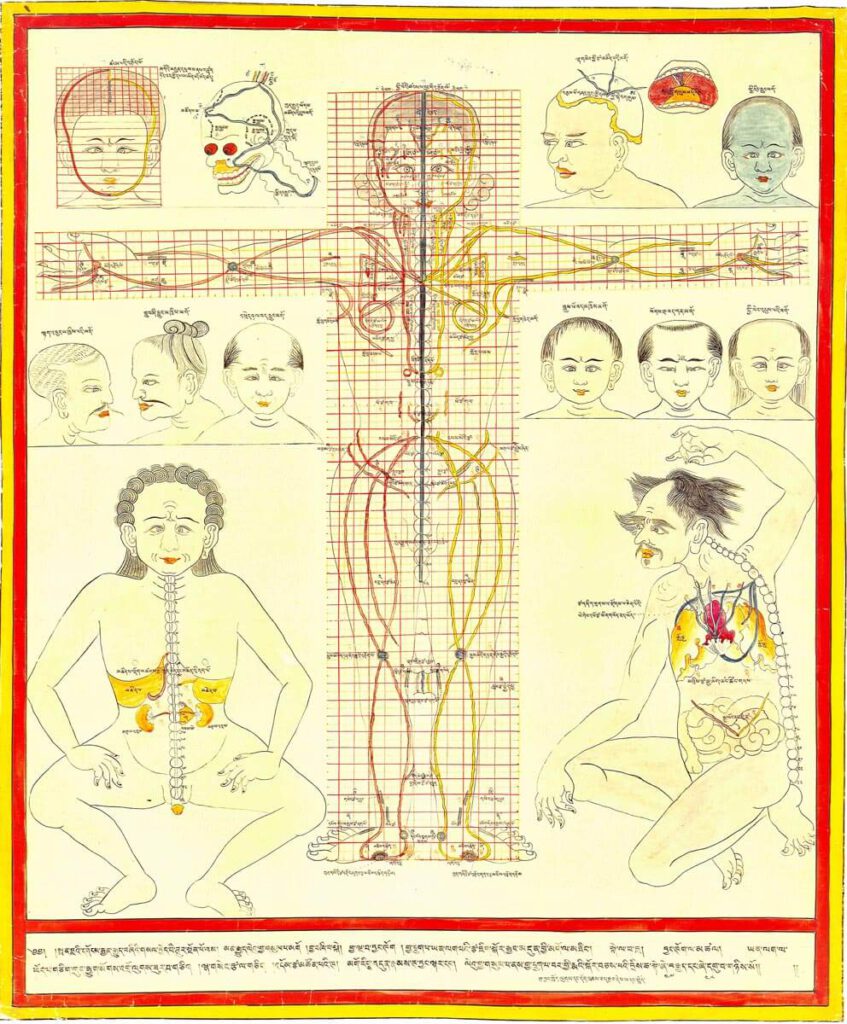
Major connecting blood vasculature of body including gut with related vulnerable points 20th century reproduction of 17th century CE painting. Held in Ulan-Ude, Republic of Buryatia, Russia. – Explicated in high detail in the traumatology section of the Four Tantras as developed from early military medical manuals, this painting depicts major blood vessels of the […]
Body metaphors including guts
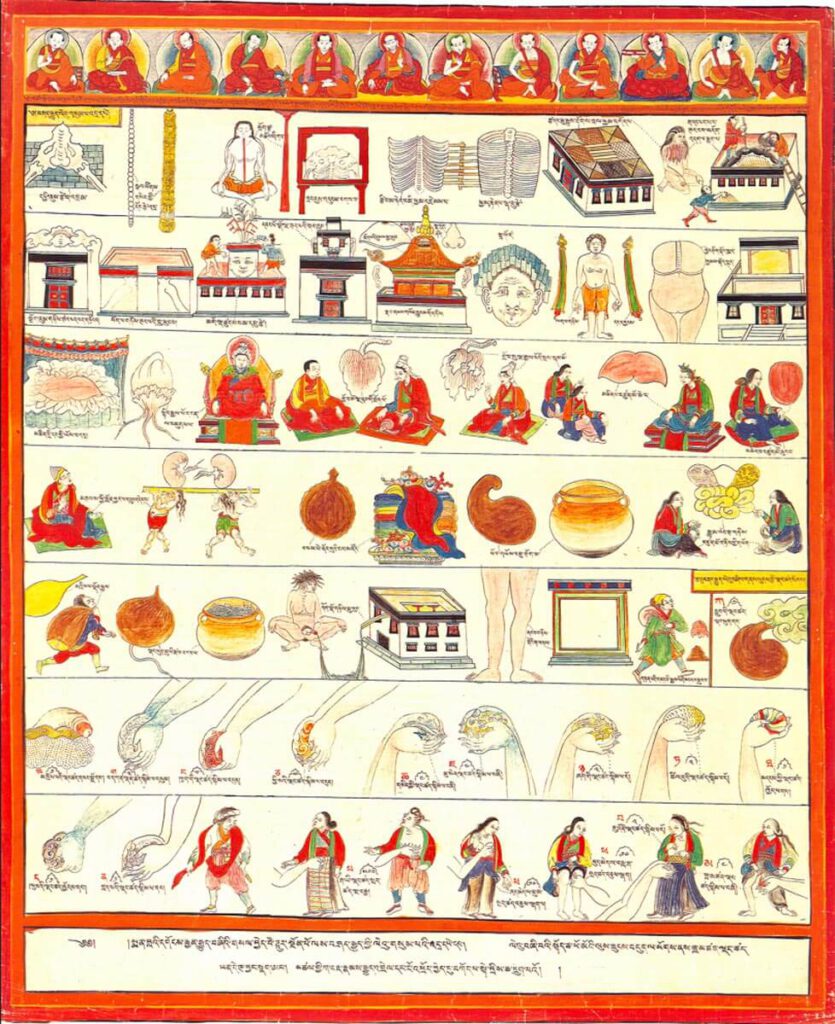
Body metaphors including guts 20th century reproduction of 17th century CE painting. Held in Ulan-Ude, Republic of Buryatia, Russia – The musculoskeletal system is likened to the architecture of a Tibetan temple, while internal organs, differentiated as solid (vital) and hollow (vessel) types, use different illustrative metaphors. The group of solid viscera include the heart, […]
Location of internal organs on modular grid
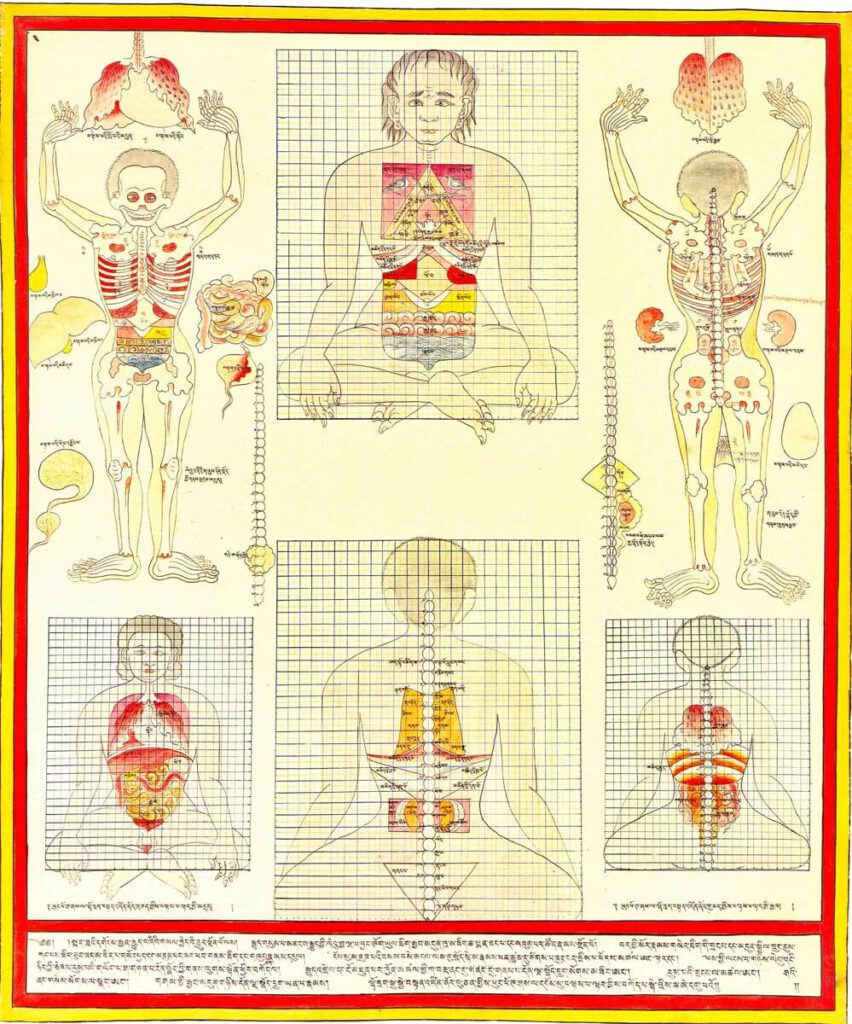
Location of internal organs on modular grid 20th century reproduction of 17th century CE painting. Held in Ulan-Ude, Republic of Buryatia, Russia. – The central figures present the anterior and posterior views of the proper positions and proportions of anatomical structures from a theoretical perspective in relation to the spine by means of the Tibetan […]
The Navel Cakra (maṇipūraka) with Intestines

The Navel Cakra (maṇipūraka) with Intestines Provenance: Printed book, Bihar, undated [1903]. Anglicized Bibliographic data The Ṣaṭcakranirūpaṇacitra with the Bhāṣya and Bhāṣāṭīkā by Svāmihaṃsasvarūpa. Bihar: Trikutivilas Press Muzaffarpur. Sanskrit Title and Author in Devanagari font स्वामिहंसस्वरूपकृतम्षट्चक्रनिरूपणचित्रम् । भाष्यसमलंकृतं भाषाटीकोपेतञ्च Sanskrit Title and Author in Roman font Svāmihaṃsasvarūpakr̥tamṢaṭcakranirūpaṇacitram: bhāṣyasamalaṃkr̥taṃ bhāṣāṭīkopetañ ca Source: Wellcome Library, manuscript number, […]
